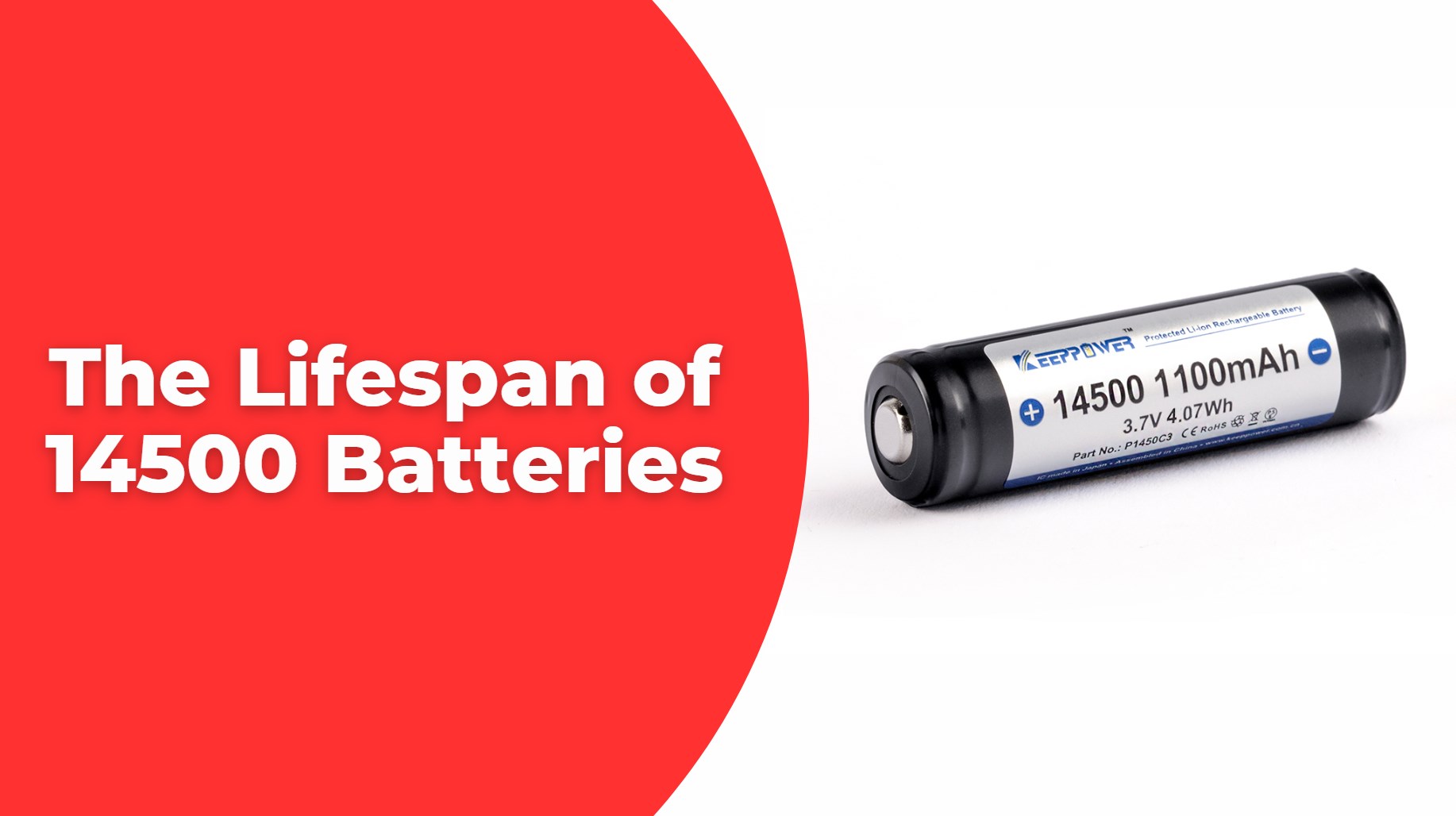When considering the longevity and performance of 14500 lithium batteries, it is crucial to understand the various factors that influence their lifespan. At Redway Battery, we are committed to delivering high-quality battery solutions, and part of our mission is to educate our clients on the details of battery performance. This comprehensive guide will delve into the specifics of how long a 14500 battery typically lasts, the factors affecting its lifespan, and the best practices for maximizing its performance.
The lifespan of a 14500 battery typically ranges from 500–1000 charge cycles, influenced by factors like discharge depth (best kept between 30%-80%) and proper charging practices using suitable chargers. Extreme temperatures can also negatively affect lifespan. Following these guidelines helps maximize your battery’s longevity.
What is a 14500 Battery?
A 14500 battery is a lithium-ion cell that is often compared to the AA battery in terms of size and shape. It has a nominal voltage of 3.7 volts and is widely used in various high-drain devices due to its compact size and powerful output. These batteries are favored in applications requiring a lightweight and efficient power source.
Typical Lifespan of 14500 Batteries
On average, 14500 lithium batteries are designed to endure between 300 to 500 charge cycles. A charge cycle is defined as the process of discharging a battery to its minimum level and then recharging it fully. The exact lifespan can vary based on several key factors, including the battery’s usage, the device it powers, and its overall maintenance.
Factors Influencing Battery Lifespan
- Usage PatternsThe performance and longevity of a 14500 battery are significantly influenced by how frequently and intensely it is used. High-drain devices, such as powerful flashlights or high-performance electronic devices, can deplete the battery more quickly, reducing the number of effective charge cycles. Conversely, devices with lower power requirements will exert less stress on the battery, potentially extending its useful life.
- Charging PracticesProper charging practices are essential for maximizing the lifespan of a 14500 battery. Overcharging or consistently allowing the battery to deplete to its minimum charge can negatively impact its longevity. It is advisable to use a charger specifically designed for lithium-ion batteries and to follow the manufacturer’s guidelines to ensure optimal charging conditions.
- Temperature ConditionsTemperature plays a significant role in the lifespan of lithium-ion batteries. 14500 batteries perform best within a specific temperature range. Extreme temperatures, both hot and cold, can affect the chemical reactions within the battery, leading to diminished performance and reduced cycle life. For optimal performance, store and use the battery within the recommended temperature range specified by the manufacturer.
- Quality of the BatteryThe quality of a 14500 battery is paramount to its longevity. High-quality batteries from reputable manufacturers, such as those offered by Redway Battery, are designed to deliver superior performance and durability. Investing in batteries with high standards of manufacturing ensures a longer lifespan and better reliability in your applications.
Maximizing Battery Lifespan: Best Practices
To get the most out of your 14500 lithium battery, consider the following best practices:
- Avoid Deep DischargeRegularly discharging a battery to its lowest capacity can shorten its overall lifespan. To prevent this, recharge the battery when it reaches approximately 20-30% of its charge. This practice helps maintain the battery’s health and ensures that it lasts longer.
- Use Proper ChargersUsing a charger that is specifically designed for 14500 batteries is crucial. Chargers that are not compatible with lithium-ion batteries can cause overcharging or undercharging, which can adversely affect the battery’s performance and lifespan. Always use a charger recommended by the battery manufacturer.
- Store Batteries CorrectlyIf you need to store 14500 batteries for extended periods, keep them in a cool, dry place. Avoid exposing the batteries to extreme temperatures or humidity, as these conditions can degrade the battery’s materials and reduce its lifespan.
- Monitor Battery HealthRegularly check the performance of your 14500 battery. Look for signs of deterioration, such as reduced capacity or unusual swelling. If you notice any issues, it may be time to replace the battery to avoid potential damage to your device.
Applications of 14500 Batteries
14500 batteries are utilized in a variety of applications due to their compact size and robust performance. Common uses include:
- High-Performance Flashlights: Many high-intensity flashlights rely on 14500 batteries for their compact form and high energy density.
- Portable Electronic Devices: Devices such as handheld fans, medical equipment, and certain types of cameras benefit from the power and size efficiency of these batteries.
- Toys and Gadgets: Many modern toys and gadgets are designed to use 14500 batteries for reliable and long-lasting power.
Choosing the Right Battery
When selecting a 14500 battery, consider the following factors to ensure it meets your specific needs:
- Capacity: The capacity of a 14500 battery, measured in milliampere-hours (mAh), indicates how much charge it can hold. Higher capacity batteries can provide longer run times but may come at a higher cost.
- Discharge Rate: For high-drain applications, ensure the battery has a suitable discharge rate. A higher discharge rate is necessary for devices that require substantial power.
- Brand Reputation: Opt for batteries from reputable brands like Redway Battery. High-quality batteries from trusted manufacturers tend to offer better performance and reliability.
Conclusion
Understanding the lifespan and optimal usage of 14500 lithium batteries can significantly impact their performance and longevity. By adhering to best practices and choosing high-quality batteries, such as those provided by Redway Battery, you can ensure reliable power for your high-drain devices and other applications. Proper care and informed choices will help you maximize the lifespan of your 14500 batteries and achieve consistent, efficient performance.




